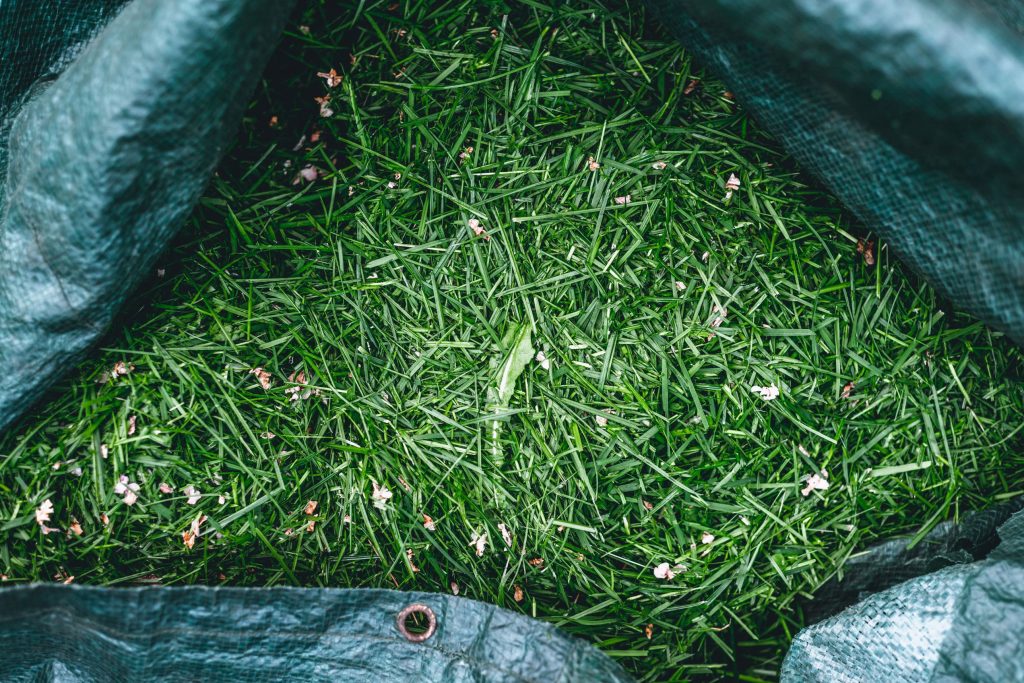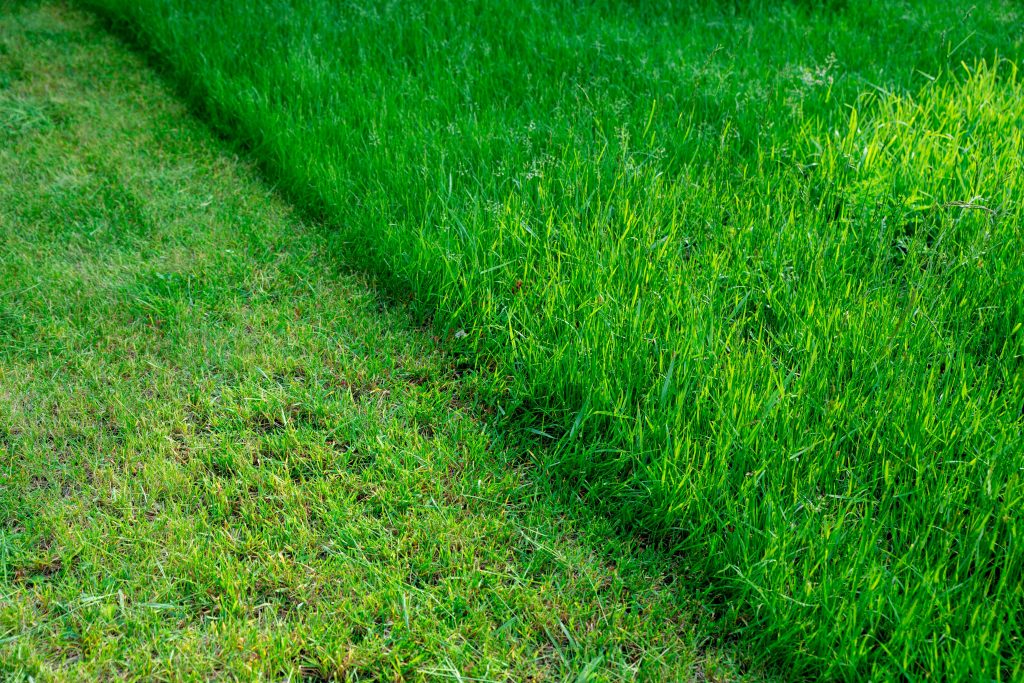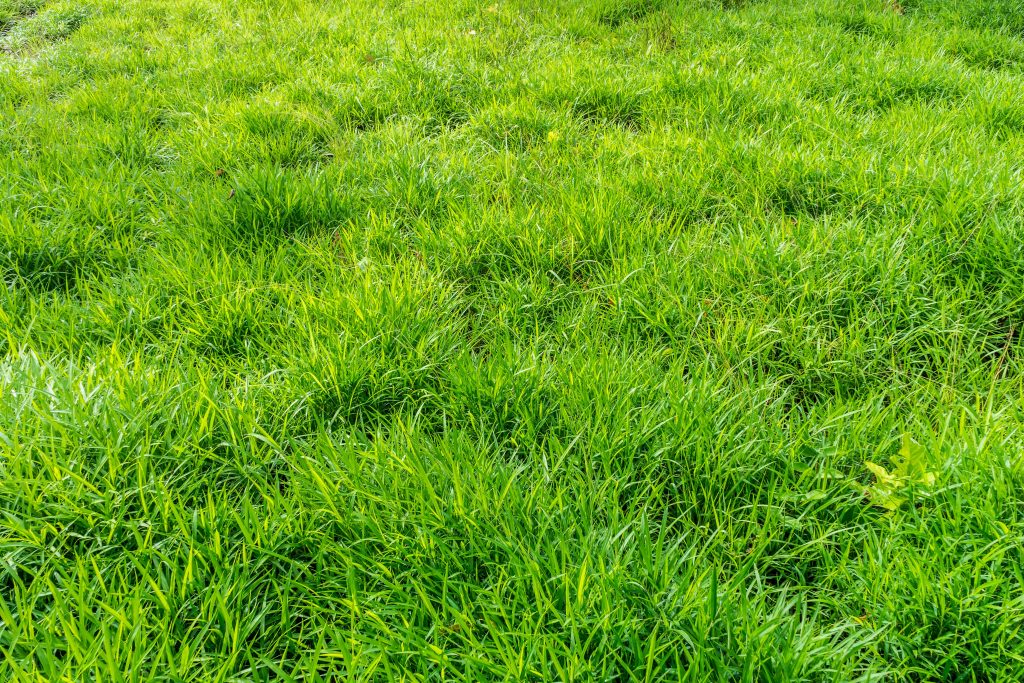If your grass has grown extremely long, you might be wondering how best to cut it, without damaging your lawn.
In this guide, we’ve explained the best ways to cut an overgrown lawn, and make your grass neat and tidy again.
How to cut long grass

Below, we’ve explained how to cut long grass, even if it’s extremely overgrown.
Step 1: take off the top third of the grass
Before getting out your lawn mower, the first thing you want to do is take off the top layer of overgrowth.
While you can just begin with your mower, it may struggle to deal with such a large amount of grass. Cutting extremely long grass without taking off the overgrowth will be a long, slow, painful process – and doing this may also damage your lawn.
There are a few different tools you can use to take off the overgrowth:
- A strimmer
- A scythe or sickle
- Shears (if you have a smaller lawn)
- A lawn mower (if your lawn is not extremely long)
When mowing, there is a rule of thirds that we follow – never take off more than a third of the height of your grass, to prevent damaging it, or stressing it out too much.
Therefore, with your strimmer, scythe, mower, or shears, you should cut off up to a third of the height of your lawn. If using a mower, put its cutting height on the highest setting, assuming that doing so would let you take off a suitably small amount.
For long grass, a strimmer is the best choice out of these four tools, as it helps to reduce the amount of effort it takes to cut the grass. Scythes and shears are more environmentally friendly, but they are also less precise, making it more difficult to prevent cutting your grass too short at this stage.
To cut grass using shears, hold them parallel to the ground, and cut the grass horizontally. If your wrists get sore, take a break, and come back to it later.
To cut grass using a scythe, you want to stand up, hold the scythe to your dominant side, and start with it positioned a bit behind you, and to your right (if you’re right handed). Then, with the scythe parallel to the ground, sweep it forward, across and in front of your body, and along the ground.
We recommend avoiding scythes if at all possible. They make it very difficult to avoid cutting the grass too short, because they’re designed to be used touching the ground. Keeping the blade off the ground while moving the scythe in a sweeping motion is very challenging to do.
If your lawn is too tall for a strimmer or a lawn mower, you could consider using a sickle, which is sort of like a handheld scythe. However, cutting the grass this way will be a very labour-intensive process.
Step 2: rake up the grass you’ve cut

Since your grass is long, you’re going to be generating quite a lot of clippings.
It’s important to rake them off your lawn, to prevent leaving too many grass clippings in place. If you leave them all, they might not decompose quickly enough, meaning moisture, air and light will be blocked from the roots of your lawn.
The other reason to do this now is because you want to wait a few days before you begin mowing again. This helps to reduce the likelihood of stressing out your lawn, by taking too much off, too quickly.
Step 3: mow the lawn on a high setting
A few days after taking the first third off your grass, you can get out your lawn mower and begin mowing.
The best type of mower for cutting long grass is a rotary mower. This is mostly because it can be quite tough to cut tall grass, due to the amount of foliage you need to walk through. In particular, having a self-propelled petrol mower can be very helpful.
Once again, you want to follow the one-third rule, and have your mower on a high cutting height.
When mowing, go slowly, and bag your clippings, unless you plan to wait at least five or so days until the next mow. Once you’re done, water the lawn, and leave it for at least a few more days.
Note: if your lawn is very bent, because it has grown so tall, try to mow in the opposite direction to the way the grass is leaning. If this doesn’t work, you may need to cut it using a strimmer/scythe/shears again, rather than a lawn mower.
Step 4: mow the lawn on a lower setting

After a short amount of time has passed, you can mow your lawn again.
Set your cutting height based on the two-thirds rule again. This time, you may be able to get your lawn to your desired height (about 5-6cm to begin with is good – you can always take it lower later on).
Mow your lawn in a different direction to your last mow, to avoid the possibility of bending the grass blades. This time, you can mulch some of the clippings if you want, unless you’re planning on doing a third pass in the next few days.
Step 5: pamper your lawn
Now that your lawn is relatively short, it’s important to take proper care of it, since it’ll have gone through quite an ordeal.
Here are some things you can do to care for your lawn after cutting it down to a reasonable height.
- Feed your lawn – leave some mulch on the grass after your final mow, or add some organic lawn feed.
- Water the lawn every day or two in summer, or every few days in spring or autumn, if you’re not getting any rain.
- Do some weeding, removing the roots and all. If your lawn had grown long and hasn’t been looked after for a while, it’s likely that weeds have taken hold in some places.
- Consider scarifying the lawn, especially if it doesn’t look great.
- Overseed the lawn, especially if there are any bare patches, or if it looks sparse in places. You might like to remove moss or clover, and then overseed these bare patches.
- When the lawn grows again, mow it at a lower height, more regularly. This will help it to grow more healthy.
How to avoid killing long grass when cutting it

To avoid killing or otherwise harming long grass when cutting it, you only need to do two things:
- Avoid taking off more than a third of the length of the grass with each cut.
- Avoid cutting the grass too short too quickly. Meaning, don’t take a third off, and then take another third off an hour later. Give the grass at least a few days between stages to recover.
Remember, grass stores its energy inside its leaves. Also, the top of the grass blade is what collects most of the light that the plant needs for photosynthesis.
If you cut the grass too short too quickly, it won’t have enough energy to keep growing (because too much of the blade is gone) and it won’t be able to replenish itself quickly enough. This can cause your grass to die.
Conclusion
Hopefully this guide helped you to plan out the process of trimming your grass down to a more reasonable height.
If you’re still unsure how to cut your overgrown grass, feel free to leave a comment below, and we’ll help out.

I’m Josh, and I’m the head writer at Lawn Care Pro.
I love everything lawns, but I’m a bit of a lawn mower nerd. I spend a lot of my free time tinkering with mowers, and planning my mowing schedule for the next few weeks.
I’m also into cars, which comes in very helpful when servicing a mower engine!





